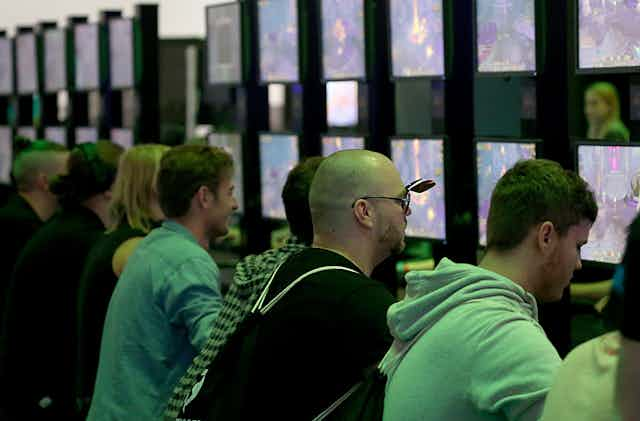The video gaming industry has transitioned from a group of backyard innovators to an industry of multi-billion dollar companies, hiring psychologists, neuroscientists and marketing experts to turn customers into addicts. The latest trend is the creation of “whales,” people so addicted to games that they spend their entire life savings to keep playing.
But the video gaming industry, today one of the fastest growing industries in the US, has more humble origins.
In the 1980s and 1990s, the early video gaming industry was dominated by backyard hobbyists. Sierra Entertainment - creators of the famous King’s Quest series - was founded by a husband and wife team. Gabe Newell, founder of Valve Software, was already rich from his days at Microsoft when he launched his hobby project Half-Life.
Collectively, the hobbyist companies of the early industry produced some of the most innovative genres of video game history – the adventure game, the real-time strategy, the city-builder, the role-playing game – all through experimentation and garage-style company development.
But in the last ten years something changed.
The rise of mobile gaming and sequels
The rise of casual gaming on mobile platforms has allowed a massive expansion of the industry, creating giant companies like King, Halfbrick, Zynga and Kabam.
Much larger than their predecessors, modern video gaming companies have adopted a more traditional company structure, hiring public relations and marketing departments and even neuroscientists to sell as many games as possible.
Today, big companies monopolise the industry with long-running sequels of old, successful titles: Assassin’s Creed, Call of Duty and Halo, to name a few. Of the ten highest selling video games in 2017 so far, eight are sequels.
With high development budgets in top companies (some games costing upward of US$250 million to produce), sequels are seen as a go to formula for success, based on name recognition alone.

The creation of ‘Free to Play’ addictive games
Video games in the 1990s were generally “premium,” meaning that you paid once to gain access to the game for life, in the same way you would buy a pair of shoes and own them forever.
Today, video game companies have moved to a more profitable model known as “Free to Play”. Research shows these Free to Play (FTP) games rely on the fact that a majority of players will play for free, while a few key players will become addicted to the game and spend a vast fortune for bonus content.
The goal of an FTP game is to get as many players as possible addicted, so that they keep buying in-game content. In-game content can include things like “visual enhancements,” digital trophies and “virtual goods”.
The use of casino techniques by games companies
Video game companies today use the same techniques as casinos to ensure customers become addicted to their games.
Commonly, they use fake currency. By using poker chips, cards or “gems,” companies can create a disassociation effect in the buyer, who does not realise how much real money they are spending. In a recent study, it was shown that people tend to spend more money when using debit cards than with cash due to this same “disassociation” effect.

FTP games have adapted another technique from casinos called “progress gates”. The typical slot machine charges you to keep playing as soon as you lose – this is known as a “hard progress gate”. In contrast to this, a “soft progress gate” prevents a player from playing for a period of time (say an hour), which can be bypassed by paying to keep playing immediately.
Modern games use both hard and soft gates to charge the gamer for a product that they ostensibly already own.
Modern video game companies also use shops and in-game ATMs to entice players to keep spending without having time to cool off outside of the game. Casinos use the same technique by placing ATMs and shops in-house. Gambling researcher Mark Griffiths suggests that this technique is used “to entice those who are gambling not to stop or go home”.
By using the same techniques as casinos, the modern video gaming industry has gone down a dark and morally dubious path.
New ethical questions exist about the effect of addictive gaming and whether or not it is fair or ethical to keep charging addicts for a product they already own.

